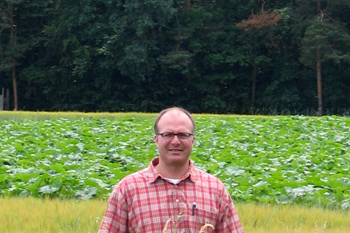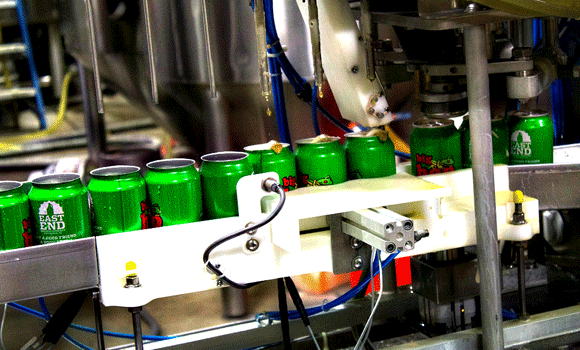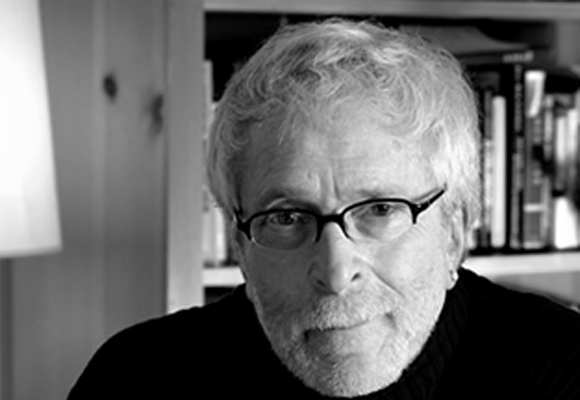 With 75 restaurants in Pennsylvania, West Virginia and Ohio, Pittsburgh-based Eat n’ Park, founded in 1949, is easily recognizable as a place for a quick, inexpensive, and tasty bite to anyone who has grown up in the region.
With 75 restaurants in Pennsylvania, West Virginia and Ohio, Pittsburgh-based Eat n’ Park, founded in 1949, is easily recognizable as a place for a quick, inexpensive, and tasty bite to anyone who has grown up in the region.
Most would be surprised to know that 15 percent of food at the company’s eateries are purchased locally, and that Eat n’ Park has an employee devoted to finding sources of local produce, meats and dairy products for their entire operation. Jamie Moore has a somewhat delicious position as Eat n’ Park’s director of sourcing and sustainability, one he’s held officially for the last year but has worked on since 2004. The company’s local food sourcing program has become more prominent as Eat n’ Park’s contract feeding lines of business–providing food to colleges, businesses and health care facilities since 1996–have expanded, and Moore talked to Keystone Edge about his challenges and successes.
Keystone Edge: What does your job entail day-to-day?
Jamie Moore: Half the time I’m out and about, the rest of the time I’m in my office. My biggest time spent is working with our current clients, specifically our onsite brands division (Parkhurst Dining Services at universities and Cura Hospitality in healthcare), defining what they want in regard to being green and purchasing local. I work with a lot of green or sustainability committees on campus and what food service can really do along those lines.
KE: What are those discussions like?
JM: I prefer to sit back and listen first about purchasing locally. I think there’s a lot of greenwashing, for lack of a better term. People will ask a school why they’re not buying local chicken or beef down the street. Well, they’d like to, but there’s an infrastructure piece that needs to come to fruition for us to be able to serve food that is local. For instance, the farm has to be USDA inspected. There’s also cost. Sometimes it’s not feasible. It’s about providing educational direction.
KE: Who else are you working with?
JM: We’re working with CSAs (community supported agriculture groups) in both ends of the state. In my role to secure local food, that CSA won’t be small for much longer. When they’ve increased their volume and willing and able to sell to us, I’ve already built a relationship with them. It comes down to relationship building, and how i can take that small farmer and give them more market. It’s really building the infrastructure behind the scenes and our CSA farmers are a piece of it.
KE: How do you measure your progress?
JM: The integrity of our program is the difference. If someone asks me to give them a percentage of what local food we’re buying at any location, I can tell them off the top of my head. My goal is to develop a database to track that. We usually go to market with 20 percent of items local and it doesn’t just revolve around produce, but also includes dairy and artisan products. The program is also defined by mileage and language. Local produce must be from within 125 miles. We know what artisan means and how it’s defined.
I look at some of the percentages schools are buying locally and many are just not right. A lot of kids who are evaluating schools on their green report cards and flocking to these schools are skewed because there’s a false sense of what local is. There’s no policeman out there, no set rules for buying local. It has to be cost effective and fit into our system that’s already in place. It’s economies of scale, trying to develop a mouse trap that works and I think ours does.
KE: How important are local and regional produce distributors to your program?
JM: We provide close to 85 locations for distributors, and we work with them to understand the philosophy of buying local. A lot of them may have relationships with growers in North Carolina, but what we want to change is when a green pepper is available locally, we’re looking for them to switch over their supply to that farm because it’s the right thing to do. Distributors can make or break us. When I see one lagging behind in their local purchases, I’ll go out and find growers, tell them what they need to do, and connect them with that distributor. I want the distributor to understand the farmer is going to be a partner.
It continues to evolve and grow so it must be cost effective for our distributors to continue it. We’re developing a niche market for distributors and they position themselves as a local produce source in the region. They probably didn’t have that in 2002.



